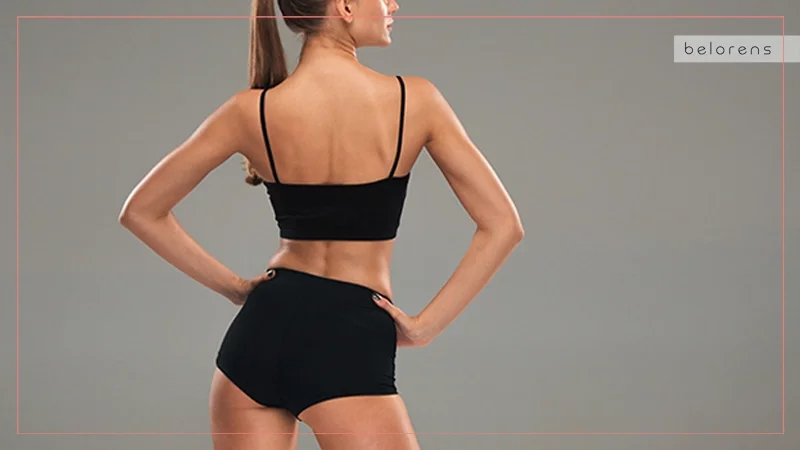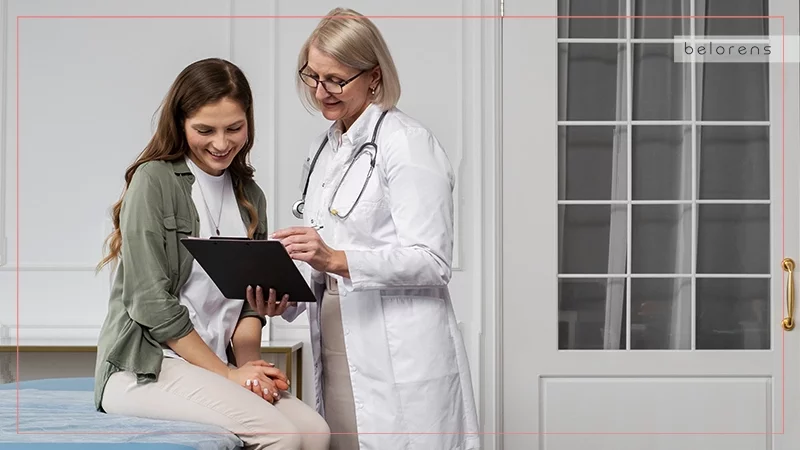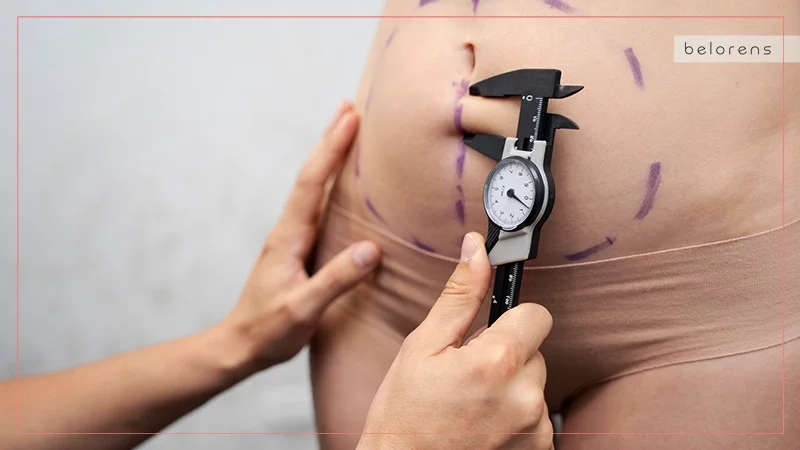Published on 31 July 2024
Lipo 360: Everything About Full-Body Liposuction
- ByMedical Content Team
- Medically Reviewed byDr. Sabine Kulhanek
Fact checked

In today's beauty landscape, achieving a sculpted, balanced physique has never been more attainable. Among the various body contouring options available, Lipo 360 has emerged as a game-changer. Unlike traditional liposuction, which focuses on isolated areas, Lipo 360 offers a holistic approach, targeting multiple regions around the torso to create a harmonious and well-proportioned figure.
The allure of Lipo 360 lies in its comprehensive nature. By addressing the abdomen, flanks, lower back, and sometimes even the upper back, this procedure delivers more uniform results, enhancing the overall silhouette. It's no wonder that Lipo 360 has quickly become a preferred choice for those seeking significant body transformation.
In this blog post, we'll explore the ins and outs of Lipo 360, from its defining features and benefits to what you can expect before, during, and after the procedure. We'll also touch on who makes an ideal candidate, potential risks, and how much it costs. Whether you're considering Lipo 360 for yourself or simply want to learn more about this cutting-edge procedure, this guide will provide you with all the essential information. Get ready to uncover how Lipo 360 can help you achieve the body contours you've always dreamed of.
What is Lipo 360?
Lipo 360, also known as 360-degree liposuction, circumferential liposuction, or full-body liposuction, is a comprehensive body contouring procedure designed to remove excess fat from multiple areas around the midsection to create a more balanced and sculpted appearance. Unlike traditional liposuction, which typically focuses on one specific area, Lipo 360 targets the entire torso, including the abdomen, flanks (love handles), lower and upper back, and sometimes even the hips and thighs.
How is Lipo 360 different from traditional liposuction?
Lipo 360 and traditional liposuction are both designed to remove excess fat and enhance body contours, but they differ significantly in scope, approach, and results.
Scope and target areas
Lipo 360 is a comprehensive procedure that targets multiple areas around the torso, including the abdomen, flanks (love handles), lower and upper back, and sometimes the hips and thighs. This approach provides a 360-degree transformation, addressing the entire midsection to create a balanced and harmonious appearance. It emphasizes achieving a proportional and symmetrical body shape and often involves more extensive planning and a customized surgical plan to ensure all targeted areas are addressed cohesively.
In contrast, traditional liposuction typically focuses on one specific area at a time, such as the abdomen, thighs, arms, buttocks, or flanks. This can be less complex depending on the area being treated, and the goal is usually to reduce fat in that particular region rather than creating overall body symmetry.
Recovery and downtime
Since Lipo 360 involves multiple areas, the recovery period might be slightly longer and more intensive. Patients may experience more extensive swelling and require a longer period of wearing compression garments, and follow-up care is crucial to ensure proper healing across all treated areas.
Traditional liposuction, in contrast, generally involves a shorter recovery time, especially if only one small area is treated. Post-operative care might be less extensive, and patients can often return to normal activities more quickly.
Who is a good candidate for Lipo 360?

Lipo 360 can be an effective solution for many individuals looking to achieve a more contoured and balanced physique. However, it’s important to determine if you are a suitable candidate for this procedure. Here are the key factors that make someone an ideal candidate for Lipo 360:
Good overall health
Candidates should be in generally good health without any serious medical conditions that could complicate surgery or recovery. Conditions such as heart disease, uncontrolled diabetes, or severe obesity may disqualify a candidate or require additional medical clearance.
Stable weight
Ideal candidates should be at or near their target weight and have maintained a stable weight for several months. Lipo 360 is not a weight loss solution but rather a body contouring procedure aimed at removing stubborn fat deposits that are resistant to diet and exercise.
Localized fat deposits
Those with localized fat deposits around the midsection (abdomen, flanks, lower and upper back) that have not responded to traditional weight loss methods are excellent candidates. The procedure is most effective for contouring and shaping these areas.
Good skin elasticit
Candidates should have good skin elasticity to ensure the skin can conform to the new contours after fat removal. Poor skin elasticity might result in sagging or uneven skin post-procedure, which might require additional treatments like skin tightening.
Realistic expectations
It is important for candidates to have realistic expectations about the outcomes of Lipo 360. While the procedure can significantly improve body contours, it is not a substitute for a healthy lifestyle and cannot achieve perfection.
Non-smokers
Smoking can impair healing and increase the risk of complications. Candidates should be non-smokers or willing to quit smoking for a period before and after surgery.
Committed to a healthy lifestyle
Candidates should be committed to maintaining a healthy lifestyle, including a balanced diet and regular exercise, to sustain the results of the procedure.
Also Read: Do I Need Weight Loss Surgery? Which One Is The Best For Me?
How is Lipo 360 done?
The steps of a Lipo 360 procedure are fundamentally similar to those of traditional liposuction in terms of the preparation and the basic techniques used for fat removal. Here’s a detailed breakdown of how Lipo 360 is performed:
Initial consultation and planning
The process begins with a thorough consultation with a board-certified plastic surgeon. During this consultation, the surgeon will assess your overall health, discuss your aesthetic goals, and determine if you are a good candidate for the procedure.
Based on your body type and goals, the surgeon will create a personalized surgical plan. This plan outlines the specific areas to be treated and the techniques to be used.
Pre-operative preparations
Before a Lipo 360 procedure, a comprehensive medical evaluation is conducted to ensure you are fit for surgery. This may include blood tests and other diagnostic evaluations. If you’re deemed medically fit for the procedure, a surgery appointment is arranged for you.
During the pre-operative consultation, you receive pre-operative instructions, which may include dietary guidelines, medications to avoid, and lifestyle modifications (e.g., quitting smoking). The type of anesthesia (usually general anesthesia) to be used during the procedure will be discussed.
The surgical procedure
Here are the surgical steps of a Lipo 360 procedure:
- Anesthesia: On the day of the procedure and immediately before performing the surgery, you will be administered anesthesia to ensure you are comfortable and pain-free throughout the procedure.
- Incisions: The surgeon will make small, discreet incisions in strategic locations around the midsection. These incisions are typically placed in natural body creases to minimize visible scarring.
- Tumescent solution: A tumescent solution (a mixture of saline, lidocaine, and epinephrine) is injected into the targeted areas. This solution helps to numb the area, reduce bleeding, and make fat removal easier.
- Fat removal: Using a thin, hollow tube called a cannula, the surgeon breaks up and suctions out the excess fat deposits. The cannula is moved back and forth beneath the skin to dislodge the fat cells, which are then aspirated out of the body.
- Multiple areas: The surgeon will treat multiple areas around the torso, including the abdomen, flanks, lower and upper back, and sometimes the hips and thighs, ensuring a 360-degree contouring effect.
What is recovery from Lipo 360 like?

Recovery from Lipo 360 involves a series of stages and requires diligent post-operative care to achieve the best possible results. Here’s a detailed look at what to expect during the recovery process:
Immediate post-operative period
Immediately after the Lipo 360 procedure, you will be taken to a recovery area where medical staff will monitor you as the effects of the anesthesia wear off. Most patients are able to go home the same day, but it is crucial to have someone available to drive you. During this initial period, it is normal to experience pain, swelling, and bruising in the treated areas. Your surgeon will prescribe pain medication to help manage discomfort.
First few days
During the first few days following the surgery, rest is essential. You should plan to limit your activities significantly, although light walking is encouraged to promote circulation and aid in the recovery process. You will need to wear compression garments around the treated areas. These garments help to reduce swelling, support the new body contours, and facilitate healing. In some cases, drains may be placed to remove excess fluid from the surgical sites. If drains are used, you will receive instructions on how to care for them and when they will be removed.
First few weeks
As you move into the first few weeks of recovery, follow-up appointments with your surgeon are crucial. These visits allow your surgeon to monitor your healing progress and address any concerns that may arise. Swelling and bruising will gradually subside during this period, and you will need to continue wearing your compression garments as instructed. While you can start to resume light activities, strenuous activities and heavy lifting should be avoided for at least 4-6 weeks to prevent complications and ensure proper healing.
Long-term recovery
Full recovery from Lipo 360 can take several months. The final results of the procedure will become more apparent as the swelling continues to decrease, revealing the new contours of your body. It is important to maintain a healthy lifestyle, including a balanced diet and regular exercise, to sustain the results of the procedure. Your surgeon will provide detailed post-operative care instructions, including guidelines on activity levels, wound care, and signs of potential complications.
Also Read: 5 Tips to Maintain Liposuction Results for Long
How much does Lipo 360 cost?
The cost of Lipo 360 can vary significantly depending on several factors, including geographic location, the surgeon's expertise, the complexity of the procedure, and the specific areas treated.
Geographic location plays a significant role in the cost of full-body liposuction. Major metropolitan areas and regions with higher living costs typically have higher prices for cosmetic surgeries compared to smaller towns and rural areas. The surgeon's expertise and reputation also impact the cost. Surgeons with extensive experience, specialized training, and a high level of expertise in performing Lipo 360 often charge more for their services. Board-certified plastic surgeons with a strong reputation and a track record of successful outcomes usually command higher fees.
Facility fees are another component of the overall cost. The cost of the surgical facility or hospital where the procedure is performed contributes to the total price. Accredited surgical centers and hospitals with advanced equipment and higher standards of care may have higher facility fees. Additionally, anesthesia fees can affect the total cost. The type of anesthesia used, whether general anesthesia or local anesthesia with sedation, and the fees of the anesthesiologist or nurse anesthetist administering it, are factors to consider.
The extent of the procedure influences the complexity and duration of the surgery, which in turn affects the cost. Treating multiple areas around the torso in a single session, as is typical with Lipo 360, can increase the cost compared to targeting a single area. Other additional costs may include pre-operative consultations, post-operative care, compression garments, medications, and any necessary follow-up appointments.
All in all, on average, the cost of Lipo 360 in the United States can range from $6,000 to $15,000. This range includes the surgeon’s fee, anesthesia, facility fees, and other associated costs. However, prices can vary widely based on the factors mentioned above.
Keep in mind that since Lipo 360 is considered an elective cosmetic procedure, it is not typically covered by health insurance. However, many plastic surgery practices offer financing options to help patients manage the cost. Financing plans through medical credit companies or payment plans arranged directly with the surgical practice can make the procedure more accessible by spreading the cost over time.
To get an accurate estimate of the cost for your specific case, it is essential to schedule a consultation with a board-certified plastic surgeon, including our experienced plastic surgery specialists. During this consultation, the surgeon will assess your needs, discuss your goals, and provide a detailed breakdown of the costs involved. This personalized assessment ensures that you have a clear understanding of the financial commitment required for Lipo 360.
Other alternatives to Lipo 360

While Lipo 360 is a comprehensive body contouring procedure, there are several alternative methods for fat reduction and body sculpting. These alternatives vary in their approach, invasiveness, and results. Here are some of the most popular alternatives to Lipo 360:
CoolSculpting (cryolipolysis):
CoolSculpting is a non-invasive fat reduction treatment that uses controlled cooling to freeze and destroy fat cells. The procedure is FDA-approved and can be used on various areas of the body, including the abdomen, flanks, thighs, and arms. CoolSculpting is an excellent option for individuals looking to reduce small to moderate pockets of fat without surgery. Results are gradual, with full effects typically visible after a few months.
Laser lipolysis (SmartLipo):
Laser lipolysis, commonly known as SmartLipo, is a minimally invasive procedure that uses laser energy to liquefy fat cells, which are then suctioned out through a small cannula. The laser also stimulates collagen production, which can result in skin tightening. SmartLipo can be performed on various areas of the body, including the abdomen, flanks, thighs, and arms. Recovery time is generally shorter compared to traditional liposuction.
Ultrasound-assisted liposuction (VASER Lipo):
VASER Lipo is a type of liposuction that uses ultrasound energy to break down fat cells before they are removed. This technique allows for more precise targeting of fat deposits and can result in smoother contours. VASER Lipo is often used to enhance muscle definition and is suitable for treating multiple areas of the body, similar to Lipo 360.
Radiofrequency-assisted liposuction (BodyTite)
BodyTite is a minimally invasive procedure that combines liposuction with radiofrequency energy to remove fat and tighten the skin simultaneously. The radiofrequency energy heats the underlying tissue, promoting collagen production and skin contraction. BodyTite can be used on various areas, including the abdomen, flanks, thighs, and arms, and is an option for individuals seeking both fat reduction and skin tightening.
Diet and exercise
For individuals looking to avoid surgical or minimally invasive procedures, maintaining a healthy diet and regular exercise routine remains the most natural way to achieve and maintain a toned physique. While diet and exercise may not target specific fat deposits as precisely as Lipo 360 or other procedures, they are essential for overall health and well-being.




